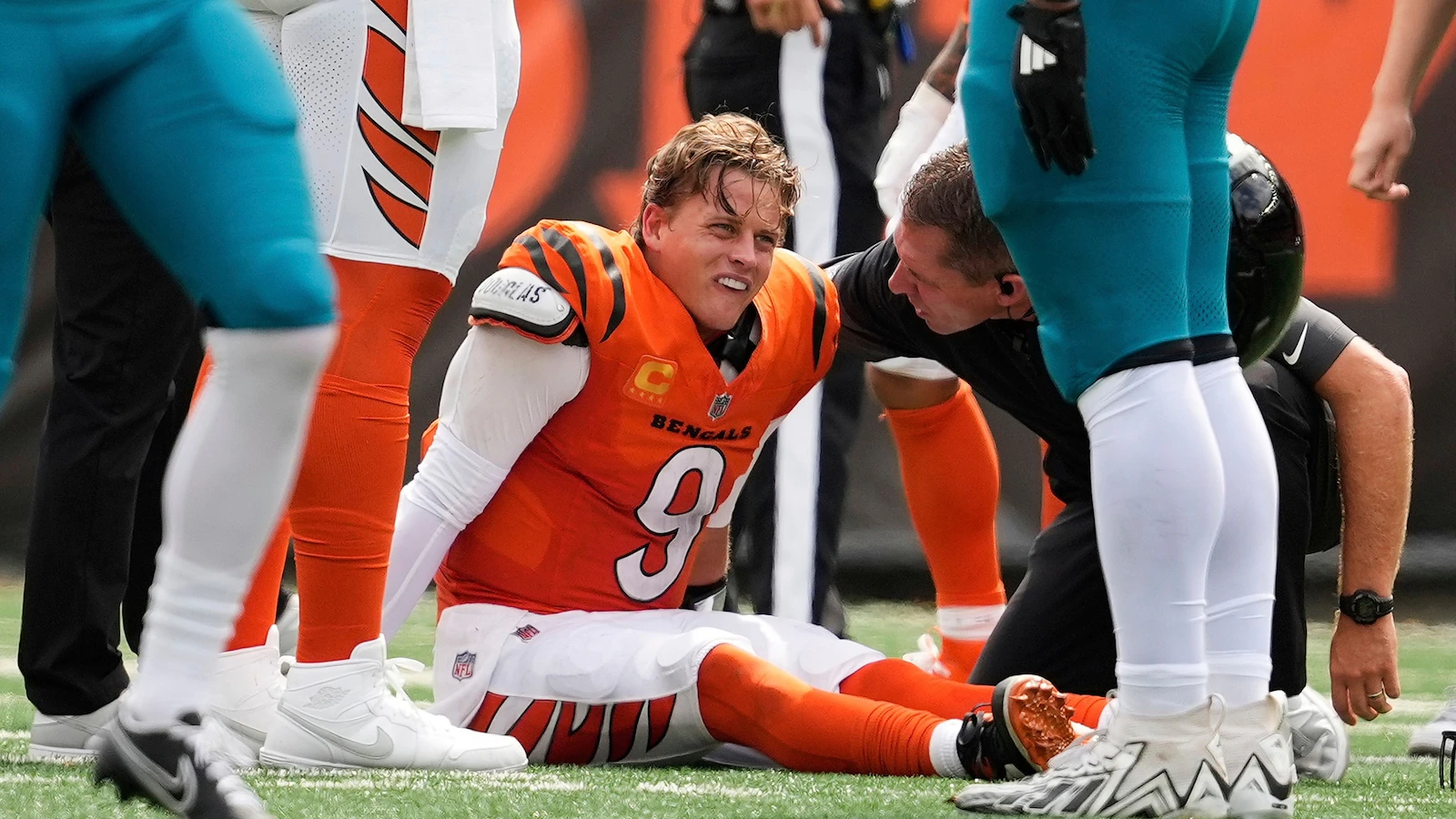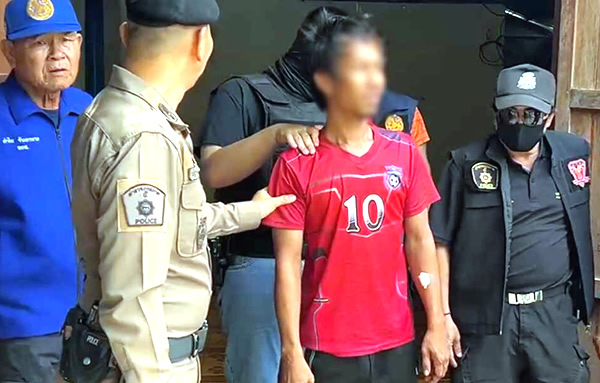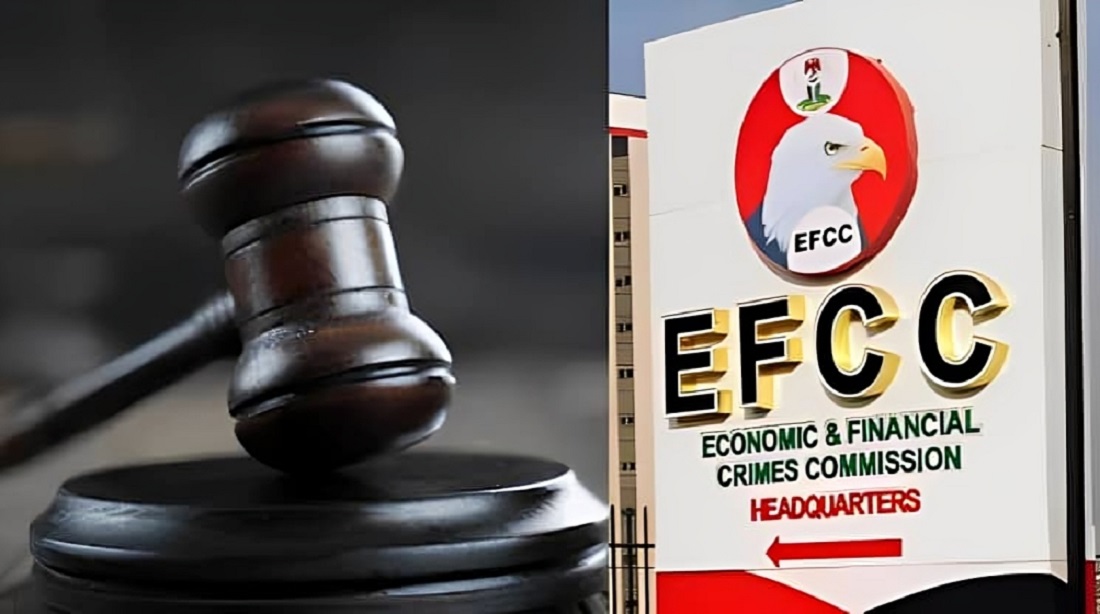By Deandre Tate-Drummer,Julia Jacobo
Copyright go

Cincinnati Bengals quarterback Joe Burrow is expected to be out for months after he sustained a toe injury on Sunday during a game against the Jacksonville Jaguars.
Burrow was seen being helped into the locker room during the second quarter of the game after he was sacked by Jaguars defensive tackle Arik Armstead.
He will require toe surgery for turf toe, which will take a minimum of three months to recover, ESPN reported. Bengals coach Zac Taylor confirmed during a news conference Monday that Burrow will have surgery in his injured left toe, The Associated Press reported.
Backup quarterback Jake Browning, who helped lead the Bengals to a 31-27 win over the Jags, will fill in for Burrow while he recovers.
What is turf toe?
Turf toe is a sprain of the main joint of the big toe.
The big toe is made up of two joints. The largest of the two is the metatarsophalangeal joint (MTP), where the first long bone of the foot (metatarsal) meets the first bone of the toe (phalanx). In turf toe, the MTP joint is injured.
The MTP joint is surrounded by important structures that hold it in place and prevent it from dislocating. Together, these structures are referred to as the plantar complex.
Injury leads to reduced agility and pain with push-off and walking. It can be a devastating injury in the elite athlete, but also a nuisance in the general population.
The Anderson classification system for turf toe is split into three grades.
In Grade I, the plantar complex has been stretched, causing pinpoint tenderness and slight swelling.
Grade II involves a partial tearing of the plantar complex, which causes more widespread tenderness, moderate swelling, and bruising. Movement of the toe is limited and painful.
In Grade III, the plantar complex is completely torn, causing severe tenderness, severe swelling, and bruising. It is difficult and painful to move the big toe.
The severity of Burrow’s injury is unclear.
How does a turf toe injury occur?
A turf toe injury happens when the toe is forcibly bent up into hyperextension, such as when pushing off into a sprint and having the toe get stuck flat on the ground.
Turf toe can occur during many sports, such as basketball, soccer and gymnastics. It is most commonly described in football and more common in athletes who play on an artificial field, since it is more rigid than a natural grass field.
Between 30 and 45% of professional American football players claim that they have experienced turf toe, according to the National Institutes of Health. Running backs, quarterbacks, and wide receivers were the most common positions to suffer turf toe injury
Athletic shoes designed for artificial surfaces are softer and more flexible, providing the athlete with more agility, but much less stability in the forefoot.
However, the prevalence of the injury has decreased with more frequent use of modern turf, which behaves in a way more similar to natural turf.
How is turf toe treated?
X-rays and MRI can help diagnose the disease and determine its severity. Fewer than 2% of turf toe injuries require surgery.
Regardless of the grade, initial treatment for most injuries should consist of basic RICE principles:
— Rest: Take a break from the activity that caused the injury and avoid walking or putting weight on your foot
— Ice: Use cold packs for 20 minutes at a time, several times a day. Do not apply ice directly to the skin.
— Compression: To help prevent additional swelling, wear an elastic compression bandage.
— Elevation: To reduce swelling, recline when you rest, and prop your leg up so it is higher than your heart.
A stiff-sole shoe or rocker bottom sole can also help limit motion. For more severe injuries, a controlled ankle motion (CAM) boot or walking cast can help minimize motion at the joint to allow it to heal. Once the injury is stable, it is important to begin progressive motion.
In addition, over-the-counter anti-inflammatory medications, such as ibuprofen and naproxen, can help provide symptom relief.
Although the vast majority of turf toe injuries can be treated successfully with conservative management, there are instances where surgery is required to allow the athlete to return to play.
Physical therapy may be helpful and should begin as soon as symptoms allow. Ask your doctor before returning to physical activity.
What is the prognosis for a turf toe injury?
Less severe injuries can take from two to six weeks to heal, but more severe injuries can take up to 12 months to fully recover.
Some cases result in incomplete recovery, joint stiffness, or an arthritic toe. Prevention of re-injury is paramount to avoiding long-term effects.
Most patients have a good outcome, but future toe protection is highly recommended to prevent a recurrence.
Injuries can result in long-term pain and disability if not properly diagnosed and treated.
Long-term complications can include lack of push-off strength, stiffness, bunion and cocking up of the big toe.
Short-term complications can include infections, scar formation and development of non-cancerous tumor-like growths on a nerve.
To prevent turf toe, athletes’ athletic footwear must be supportive and appropriate to the surface on which they compete.
An injured athlete also needs instruction on flexibility and strengthening exercises for the ankle and foot to increase their ability to withstand the stresses from their athletic activities.
Big toes play a critical role for quarterbacks, who rely on the mobility the appendage offers, ESPN reported.
Deandre Tate-Drummer, MD, MPH is a General Surgery resident physician in Metro Atlanta, Georgia and a member of ABC News’ Medical Unit.



